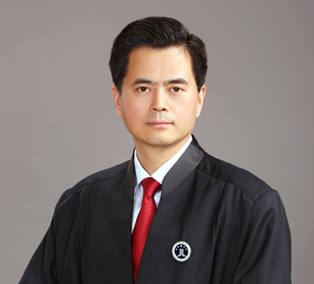Ex-parte Protection to Prior Trademark User by Bombay High Court
The Bombay High Court has protected the trademark of a prior user by passing and ex-parte and ad-interim order, which was recently confirmed while reiterating that a case of infringement and passing would be made out if the rival trademarks are phonetically, visually and structurally similar.
Background of the case
The dispute concerned a question of whether the marks ELEKTROMAG (used by the plaintiffs) and ELEKTROMAGNETISCH (used by the defendants) were deceptively similar.
In the matter of Elektromag Devices and Ors v/s Nikhil Ravindra Bhawalkar & Ors., vide an order dated 20th June, 2023, the Hon’ble Bombay High Court refused to set aside an ex-parte, ad-interim order earlier passed in favour of the plaintiffs. The Court observed that the impugned trademark, namely “ELEKTROMAGNETISCH” and the device used by the defendants were deceptively similar to the registered trademark of the plaintiffs, that is, "ELEKTROMAG” and that the defendants' device and products were also similar to that of the plaintiffs.
The defendants had filed an application for vacating the earlier order of January 16, which was disposed of by the Court on June 20.
M/s. Elektromag Devices and two others (plaintiff no.1, plaintiff no.2 and plaintiff no.3) filed the suit in the Hon’ble High Court Bombay, claiming to be the licensed / permanent users with respect to the trademark in question.
Plaintiff no.1 was in the business of manufacturing and trading in electrical equipment and apparatuses using electromagnets, including lifting magnets, magnet separators, metal detectors, construction equipment and the like goods (“the said goods”).
Plaintiff no.2 and plaintiff No.3 were companies who were licensed / permanent users of the first plaintiff with respect to the suit trademarks. They carried on the business of manufacturing and marketing the said goods for and on behalf of the first plaintiff.
The plaintiffs had applied for and obtained registration of their trademark ‘ELEKTROMAG’ on or about 23rd December, 1980, under Section 9 of the Trade Marks Act, 1999.
The plaintiffs claimed that they had acquired wide and enviable goodwill and reputation in India and abroad, due to the long, continuous and extensive use of the trademarks and the trading names and style. They were granted the registered domain name, www.elektromag.com in the year 1998 and the said domain name has been exclusively associated with the first plaintiff since.
Defendant no.1 was an ex-employee of the 2nd Plaintiff and claimed to be a director of the second defendant, which in turn claimed to be a group entity of the 3rd defendant. The fourth defendant was a partner of the 3rd defendant and claimed to be the CEO of the 3rd defendant.
The defendants were manufacturing and trading under the trademark ‘ELEKTRO Magnetisch’, under a composite trademark along with the trading name and style “ELEKTROMAGNETISCH” and operating a website / domain named www.elektromagnetisch.com.
The defendants had filed an application for the registration of the trademark under Class 7 of the Trademarks Act, 1999 and were argued to be in continuous use of the impugned trademark.
Findings and conclusion of the Court
As one of the defendants was an ex-employee of the plaintiff and since the defendants were aware of the reputation and goodwill of the plaintiff’s registered trademarks, the defendants are not bona fide adopters and honest concurrent users of the impugned trademarks, the Court held.
The Court rejected the defendants' contention that “ELEKTROMAGNETISCH” is the name of the technology which literally means “ELECTROMAGNETISM” and that both the plaintiffs and the defendants had derived their names from it. The defendants had asserted that these marks were generic and could not be registered. The Court, however, rejected this stance, considering that the defendants too had applied for the registration of the device, albeit under a different class.
As the plaintiff’s trademarks were already registered, there was a very narrow window available to the defendants to challenge registration thereof as set out by the Full Bench of the Bombay High Court in the case of ‘Lupin Ltd. Vs. Johnson & Johnson & Anr. (2015 (61) PTC 1 (Bom)(FB))’, the Court added.
At interlocutory stage, there is strong presumption in favour of the plaintiff’s registered trademarks, Justice RI Chagla held. The validity of registration of the plaintiffs’ trademark cannot be challenged at the present stage, the Court added.
The Court observed that the plaintiff had established long usage of the mark through several documents and, therefore, it was held to be distinctive. The Court held that the adoption and the use of such a trademark was an attempt to piggy back upon the goodwill and the reputation of the plaintiff.
The Court pointed out that it is settled law that when the whole of the plaintiffs' mark is subsumed in the defendants’ mark, as it is in the present case, a case is made out for infringement.
The Court held that the mark has to be seen as a whole and ultimately declared that the defendants’ mark was structurally, visually, and phonetically similar to the plaintiffs' trademark “ELEKTROMAG”.
The Court, therefore, upheld the ad-interim order and restrained the defendants and their agents by an order of temporary injunction.






